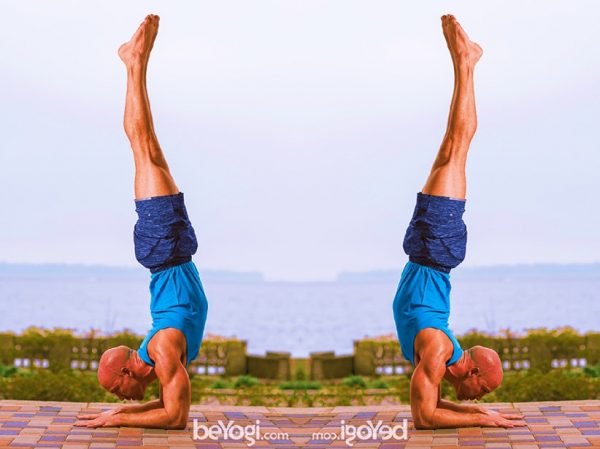
Feathered Peacock Pose
Feathered peacock pose is a challenging intermediate / advanced pose that needs several practice session to get into the pose properly. Those who suffer from shoulder, neck and chest pain must be careful and seek advice before learning or practicing this pose. This beautiful pose improves sense of balance, strengthens the arms, back and shoulders. It gives flexibility to abdomen, stretches shoulder, chest, belly and neck. This pose is recommended for those who has struggle in focusing and want to get relief from stress and milder depression. It calms the mind and gives sense of achievement and improves confidence in oneself – Healthy Life
LEVEL :Intermediate
Anatomy :Arms, Back, Chest, Shoulders
Pose Type :Arm Balance, Inversion
Sanskrit :Pincha Mayurasana (pin-chah my-yur-AHS-anna) pincha = feather / mayura = peacock
BENEFITS
- Strengthens the shoulders, arms, core, and back
- Stretches the chest and shoulders
- Improves balance
- Calms the mind
- Relieves mild depression
CONTRAINDICATIONS
- Pregnancy
- High blood pressure
- Neck, shoulder, or back injuries
- Headache
- Heart conditions
- Glaucoma
- Ear infections
HOW TO
- Kneel on the floor. Clasp your elbows with opposite hands and place them on the ground in front of you.
- Keep your elbows where they are, but release your hands and bring them forward so your forearms are parallel to one another, palms facing down.
- Curl your toes under and straighten your legs. Walk your feet toward you until your hips are over your shoulders.
- Gaze slightly forward and draw your shoulders upward. Lift your right leg to the sky. Then bend your left knee slightly and push off the floor to lift your left leg toward the sky.
- Balance in the pose for several breaths. Exhale and carefully lower both feet to the floor.
MODIFY OR REPLACE
Alternatives:
- Forearm Plank/ Dolphin Plank pose
Modifications:
- Loop a strap around the upper arms to keep the elbows close together.
SEQUENCING TIPS
Before:
- Cow Face pose (Gomukhasana)
- Bow pose (Dhanurasana)
- Dolphin Plank pose
After:
- Child’s pose (Balasana)
- Downward-Facing Dog (Adho Mukha Svanasana)
TEACHING CUES
- Fix your gaze at a point ahead of you to balance.
- Draw your shoulders upward.
- Draw your belly toward your spine.
- Reach your tailbone toward your heels.
VARIATIONS
- Bend your knees and draw your toes toward the crown of your head for Scorpion pose (Vrschikasana).
WATCH OUT FOR
- Overarching of the back
- Shoulders collapsing
- Gaze downward rather than slightly forward
Author: Sumana Rao | Posted on: July 27, 2022






















Write a comment